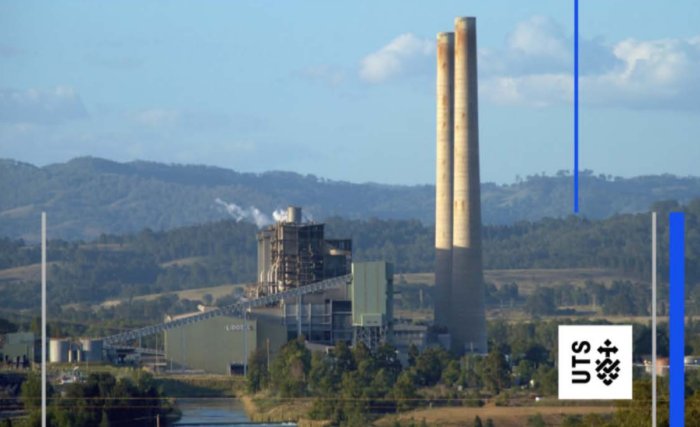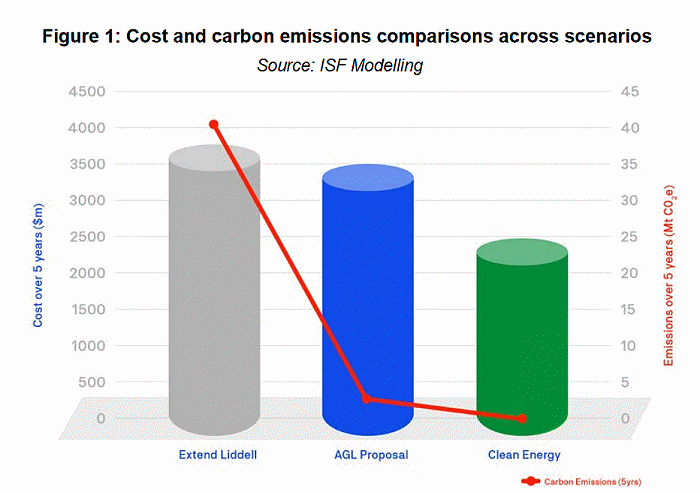
A new report states shuttering the ageing coal-fired Liddell Power Station on schedule and replacing it with a “clean energy package” would not only slash emissions, but save a truckload of cash.
Economic modelling conducted by the UTS Institute for Sustainable Futures (ISF) examined several proposals for the coal-fired clunker.
- Extending its life by 5 years past the 2022 scheduled closure date – the Turnbull Government’s favoured option.
- AGL’s proposal of 100 MW of capacity upgrade at the Bayswater coal power station, 750 MW of gas power, 50 MW of wind, 100 MW of demand response and 50 MW of batteries
- A “clean energy package” of 1000 MW of energy efficiency, 600 MW of new wind energy generation, 250 MW of demand response and 200 MW of flexible pricing.
The results showed the final option to be significantly cheaper – and no less reliable than either the Extend Liddell or AGL Proposal says ISF.
Building on the clean energy package with new battery storage, solar thermal and bioenergy would still be almost half a billion dollars cheaper than keeping Liddell open.
“As much as 60 per cent of Australia’s coal fired power stations are expected to reach retirement age in the next 15 years,” said ISF Research Director, Chris Dunstan. “Now is the time to prepare for this transition. The good news is that by replacing this capacity with smarter, clean energy options we can reduce costs, reduce emissions, create jobs and maintain reliable electricity supply.”
The report (PDF), “Beyond Coal: Alternatives to Extending the Life of Liddell Power Station” was prepared by ISF for the Australian Conservation Foundation. (ACF)
ACF said Australia was being held back by politicians stalling a comprehensive plan for the swift transition to clean energy.
Extending Liddell’s lifespan isn’t particularly popular with the Australian public. A September poll indicated 77% of Australians believe public money should not be used to keep the power station open past 2022. The same poll showed the most favoured alternative was a Clean Energy Target to encourage renewable generation to replace it. However, the proposed Clean Energy Target was dumped last month in favour of the still somewhat mystical National Energy Guarantee.
Liddell Power Station was commissioned in the early 1970s and has “never been a good plant“. Work carried out on the facility in recent years has been more of a band-aid than anything else, with at least one of its four units now reportedly routinely out of action.


 RSS - Posts
RSS - Posts



And if the clean energy option would be implemented;
”
A “clean energy package” of 1000 MW of energy efficiency, 600 MW of new wind energy generation, 250 MW of demand response and 200 MW of flexible pricing.
The results showed the final option to be significantly cheaper – and no less reliable than either the Extend Liddell or AGL Proposal says ISF.
”
then the savings could be used to fund the providing of interest-free finance to householders to install and use domestic rooftop photovoltaic systems with associated battery storage, which would help the working poor, help the environment, reduce public health costs, and…, further stabilise the electricity supply and demand.